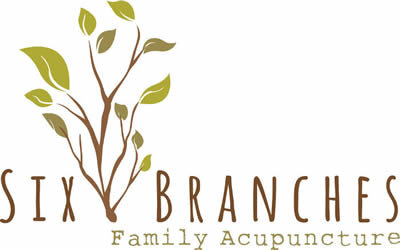Guest Post by Kristen Horner Warren, L.Ac, M.S., M.A., Dipl.OM
(EDITED 05/13/2015: A previous version of this article included a section titled “A few key facts about dry needling”. This section has been removed and I now encourage interested readers to consult a detailed and authoritative discussion of the same issues by the National Center for Acupuncture Safety and Integrity.)
To this point I have not spoken out about this issue because I didn’t want to get embroiled in an ugly fight, but it has come to the point that I cannot in good conscience remain quiet about a serious threat to public safety and the integrity of a profession that I love. What is that threat? It is so-called dry needling, which is another name for acupuncture performed by physical therapists, occupational therapists, massage therapists, athletic trainers, physician’s assistants, and other allied health professionals, typically after 20-30 hours of training.
I feel that I have something unique to contribute to this discussion, given that I invested the time and money required to complete a 30-hour certification in “Dry Needling for Pain Management”. This experience gave me an inside look at the training that practitioners of dry needling receive in contrast with my training as a licensed acupuncturist. The bottom line? I am gravely concerned and see dry needling as a serious threat to public safety.
This is not about defending territory
When I first learned about dry needling I was open-minded. I am not by nature territorial or competitive. My primary goal is to offer my patients the most effective treatment and I am willing to entertain the possibility that people outside of my profession could have something clinically useful to contribute to my knowledge base. In the aftermath of a major car accident in 2003 I worked closely with a physical therapist for about six months and was extraordinarily impressed his knowledge and skill. This experience caused me to have a generally positive attitude toward physical therapy as a profession.
In an effort to make a fair assessment of dry needling and out of a desire to learn, I traveled to Phoenix in 2012 to attend a three-day “Dry Needling for Pain Management Certification” course. The instructor is well-known in the field and is the author of two textbooks on the topic and I was eager to learn more about his “neurophysiological” approach to treatment.
My experience at the “Dry Needling Certification” course
There were approximately 60 other practitioners in attendance. Most of them were physical therapists, a few were chiropractors, two were physicians, and there was one other licensed acupuncturist. Friday and Saturday were devoted to lecture and the material was interesting and useful. I scribbled copious notes (we were prohibited from using laptop computers out of concern that we would surreptitiously record the class), was fascinated by the in-depth theoretical discussion surrounding how acupuncture works neurophysiologically, and was impressed by the knowledge and enthusiasm of the other students.
The practical portion of the course is where things got scary
Sunday was the practical portion of the course. We were given boxes of cheap acupuncture needles in lengths ranging from 30 to 50 millimeters. The entire group of 60 gathered around one massage table and stood on tip-toe to try to get a good view of the instructor as he needled a series of points on a volunteer subject. Then we broke off into groups of three or four to practice. Because there was only one instructor for the whole group, within a matter of moments I became the informal guide for my side of the room.
Like many things, acupuncture looks simple and easy when done by an expert yet is a lot more complicated than meets the untrained eye. Most of the other practitioners in attendance had never handled acupuncture needles before, so they were fumbling with basic skills such as how to open needle packages and handle guide tubes. This seems like a minor point but is not — clumsy handling of acupuncture needles and associated equipment can easily result in contamination of the needles and risk for infection.
As the day of needling practice proceeded, I became more and more concerned. In Chinese medicine school we spent over a year in the classroom learning about safety considerations surrounding acupuncture before we so much as touched needles. Like high school students in driver’s ed who are forced to view videos of high speed collisions and look at photographs of the mangled wreckage of a drunk driver’s cars, we spent weeks studying cases (rare as they are) of people who had been harmed by inappropriate needling. We examined dozens of CT scans which showed how very close the apex of the lungs are to the underside of the trapezius muscles. We palpated the bodies of our classmates, learning to locate critical structures by feel. We discussed the fact that movements associated with respiration and/or digestion can cause a needle placement that was initially safe to become unsafe as the patient rests with the needles in place. We were encouraged to plan our treatments to make use of lower risk points on the extremities whenever possible.
In Chinese medicine school, when we did start needling, it was under the very close supervision of an expert. I inserted hundreds of needles in my own hands, feet, and legs before I touched another person and I inserted thousands of needles in my classmates’ hands, feet, and legs before I started practicing on points on the torso, neck, and face. I had been working with needles for two years (and hundreds of hours) by the time I touched a patient.
Now I found myself in a room full of minimally supervised individuals who were being encouraged to needle “assertively” into high-risk points located over internal organs less than 20 minutes after they touched an acupuncture needle for the very first time. I scurried between groups, answering questions, clarifying point locations or correcting angle of insertion, and exclaiming “hold on a sec, don’t do it that way!!!” over and over again. Although the other students were all experts in anatomy and musculoskeletal pathology, what they lacked entirely was the very subtle “feel” that is required to needle skillfully, safely, and painlessly.
Needling is a subtle skill that takes years to master
In Chinese medicine school, my early needling training was at the hands of a man who is the tenth generation acupuncturist in his family who had begun his own training in needling at age nine. He taught me that the acupuncture needle is a delicate instrument similar to the proboscis of a mosquito. He explained that, in the hands of a master acupuncturist, a needle is a living thing, an extension of the fingertips. The skilled and mindful acupuncturist can feel very clearly what is going on at the tip of the needle at all times. With this very careful attention, it is possible to feel when one’s needle tip is approaching structures that ought not be penetrated, such as nerves, blood vessels, the periosteum (the membrane surrounding bones), or the membrane surrounding internal organs.
The nature of the dry needling course made instruction in these types of subtleties impossible. One of the advantages being so busy answering questions during the practical portion of the course is that I was not subject to much needling myself. The exclamations of those who were being needled made it clear, however, that “painless” is not a description that could be attached to the techniques that were being used. I saw several rapidly developing bruises resulting from blood vessels that had been nicked, as well as heard the howls of a couple of practice subjects whose delicate periosteum had been plowed into by an incorrectly angled or too-deep needle.
Ignorant people overestimate their knowledge and skill because they are so ignorant that they don’t know they are ignorant
By the end of the day most of the students had needled each point no more than a few times (and clumsily at that), yet in his closing comments the instructor encouraged all of us to leap into the practice of dry needling the next morning at our respective clinics. My heart sank at the thought of how many patients these new “practitioners” would come into contact with. At best they would provide a painful and ineffective experience with acupuncture and at worst they could cause serious injury. There was no discussion of the fact that three days of training is a tiny drop in the bucket of what is required to become competent with needles. The other professionals in that weekend course left on Sunday evening believing that they were fully qualified at something that I am well aware that I have still not mastered after nearly four years of formal education and over twelve years of full time clinical practice.
The whole experience made me think of the Dunning-Kruger Effect. According to the Journal of Personality and Social Psychology:
The Dunning–Kruger effect is a cognitive bias wherein unskilled individuals suffer from illusory superiority, mistakenly assessing their ability to be much higher than is accurate. This bias is attributed to a metacognitive inability of the unskilled to recognize their ineptitude. Conversely, highly skilled individuals tend to underestimate their relative competence, erroneously assuming that tasks which are easy for them are also easy for others.
In plain English: Ignorant people overestimate their knowledge and skill because they are so ignorant that they don’t know they are ignorant.
Based on my experience attending a dry needling certification, this explains exactly what is going on with physical therapists and other professionals who are practicing (and teaching) dry needling — having made no effort to understand the rich history, subtle skill, and extensive training involved with real acupuncture, practitioners of dry needling assume that the training of Licensed Acupuncturists is limited to “superstitious” or “archaic” notions such as Qi, meridians, Yin, and Yang. Having made this assumption, they further assume that a physical therapist’s extensive knowledge of anatomy qualifies them to wield needles with nothing more than a weekend’s training.
It is dangerous when any medical professional overestimates their ability
This state of affairs is dangerous, a fact that has been borne out by several recent cases in which high-profile patients have been injured by practitioners of dry needling (although a couple of these articles refer to “acupuncture” as opposed to “dry needling” the training of the practitioners involved is similar to what I experienced in the dry needling course). You can read about these cases here.
Olympic skier attributes collapsed lung to dry needling
Canadian olympian’s nightmare after dry needling collapses her lung
Andrew Llyod Webber’s health woes blamed on acupuncture
References
CPT Assistant: Coding Clarification – Trigger Point Injections Using “Dry Needling” Technique
National Chiropractic Council letter to Oregon Medical Board Doctor fined $35,000 for Medicare fraud related to dry needling
American Physical Therapy Association: Physical Therapy & the Performance of Dry Needling












